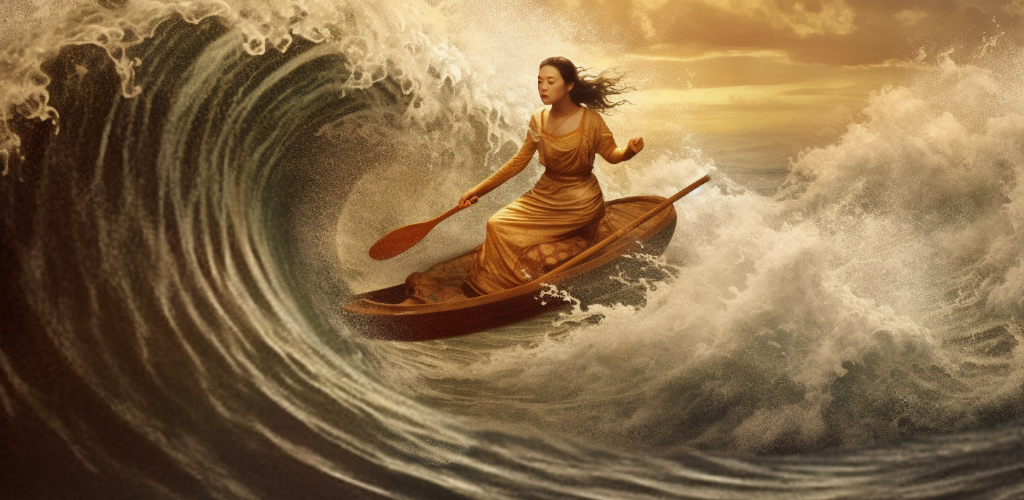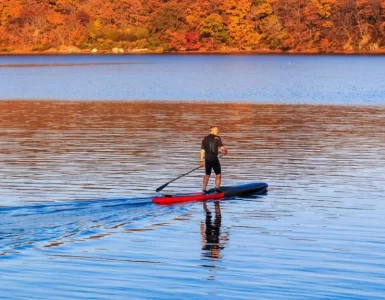Surfing, a sport that has become synonymous with beach culture and the free-spirited lifestyle, has a rich and deep history. Its origins can be traced back to ancient times, and its journey from a cultural ritual to a globally recognized sport is nothing short of fascinating. Today, we’re going to ride the wave of surfing’s history, tracing its path from ancient traditions to a modern phenomenon.
Surfing: A Cultural Phenomenon
Contrary to popular belief, surfing wasn’t always the adrenaline-charged sport we know today. In fact, it started as a cultural activity deeply embedded in the fabric of ancient societies. Can you imagine that? The act of riding waves, which we now associate with thrill and excitement, was once an integral part of social and spiritual rituals.
Ancient Hawaii: The Birthplace of Surfing
Surfing, as we know it, was born in the sparkling blue waters of ancient Hawaii. The early Hawaiians didn’t just surf for fun; it was a deeply spiritual activity that was intertwined with their religious beliefs and practices. But how did they surf without the modern foam and fiberglass boards we see today?
Early Hawaiians crafted their surfboards from the wood of native trees. These boards, called ‘papa he’e nalu’, were considered sacred objects. They varied in size and shape, depending on the rider’s social status and the type of waves they intended to ride. Isn’t it fascinating how a seemingly simple sport was so deeply integrated into their culture?
Evolution of Surfing
Have you ever wondered how surfing has evolved over the years? Well, let’s dive into it. Surfing, which started as a cultural activity, has gone through a fascinating transformation over the centuries. From a spiritual activity observed in ancient times, it morphed into a recreational pastime and eventually a professional sport. But how did this happen?
Surfing and the Western World
Let’s rewind to the 18th century. The Western world was introduced to surfing when Captain James Cook landed in Hawaii. Cook was fascinated by the Hawaiians’ skill and agility in riding the waves. This was the first recorded instance of Europeans encountering the sport, and it sparked a surge in popularity.
As stories of these wave riders spread, more and more Westerners started to visit Hawaii to catch a wave. Surfing started to shed its spiritual connotations and became more of a recreational activity – a fun and exciting way to connect with the ocean. Doesn’t it make you wish you could go back in time and ride those first waves with them?
The Rise of Competitive Surfing
Fast forward to the 20th century, and competitive surfing began to take shape. The first surf clubs emerged, organizing competitions and promoting the sport. This was a pivotal time, as it marked the transition of surfing from a pastime to a professional sport.
Then came the formation of professional surfing leagues. These leagues provided a platform for surfers worldwide to showcase their skills and compete at the highest level. The introduction of judging criteria, competitive formats, and professional standards marked a significant shift in the sport’s landscape. It’s truly amazing how far surfing has come, right?
In conclusion, surfing has been a dynamic and evolving sport. From its cultural roots in ancient Hawaii to the trend-setting sport it is today, surfing has ridden a wave of change. It’s more than just a sport; it’s a lifestyle, a community, and a testament to our deep, human connection with the ocean. So, next time you hit the waves, take a moment to appreciate the rich history beneath your board!
The Technological Progression of the Surfboard
Have you ever thought about how far we’ve come in terms of surfboard technology? It’s pretty mind-boggling when you consider the huge leaps and bounds that have been made.
Back in the day, surfboards were made of solid wood and were extremely heavy. They were difficult to maneuver and required a lot of physical strength. But they were also a labor of love, painstakingly crafted by the surfer themselves or a skilled craftsman. Isn’t it amazing how people managed to ride the waves with such rudimentary equipment?
Then came the shift to lighter materials. Foam and fiberglass became the new norm, making surfboards lighter, more flexible, and easier to handle. This revolution in surfboard technology opened up the sport to a much wider audience, as it became less physically demanding and more about skill and technique.
Modern surfboards are an intricate blend of art and science, with designs that are constantly evolving to cater to the ever-changing demands of the sport. Isn’t that something worth marveling at?
Surfing in Pop Culture
Surfing isn’t just a sport – it’s a lifestyle, a culture, and a significant part of our popular culture. From fashion to music to film, surfing has made its mark and continues to influence our daily lives.
Remember the beach fashion of the 60s? That was all thanks to surfing. Bright floral prints, board shorts, and flip flops became the epitome of cool, casual beachwear, influenced by the laid-back, sun-soaked lifestyle of surfers.
And let’s not forget the music. The Beach Boys, Jan & Dean, Dick Dale – they all created a sound that is synonymous with surfing. This genre, known as surf rock, was all about capturing the carefree spirit and exhilarating thrill of riding the waves.
Then there’s the silver screen. Over the years, there have been many films that have beautifully captured the essence of surfing. Some of these have even become cult classics.
- The Endless Summer (1966)
- Big Wednesday (1978)
- Point Break (1991 & 2015)
- Blue Crush (2002)
- Riding Giants (2004)
Surfing has certainly left an indelible footprint on pop culture. Who knows what the next wave of influence will bring?
The Modern Era of Surfing
So, where does surfing stand today? It’s not just a sport anymore – it’s a lifestyle, a culture, a globally recognized phenomenon. From the sandy beaches of Hawaii to the rugged coasts of Australia, surfing has spread its wings far and wide. It’s no longer confined to the realms of ancient traditions or the domain of beach bums and sun seekers. Surfing has carved out its own niche in the world of professional sports, complete with an industry that includes everything from equipment manufacturers to dedicated surf schools and media outlets.
Surfing in the Olympics
Ever thought you’d see surfing in the Olympics? Well, the unthinkable has happened! The Tokyo 2020 Olympic games marked a significant milestone in the history of the sport. For the first time ever, surfing was included as an official Olympic sport. Quite a journey, isn’t it? From the sacred ritualistic practices of ancient Hawaiian culture to the grand spectacle of the Olympic games, surfing has truly come a long way. This inclusion has not only given the sport a wider audience but also added a new layer of prestige to it.
Surfing’s Future
So, what’s next for surfing? The answer lies in technology. Advancements in wave pool technology are making the sport more accessible to people around the world. Gone are the days when you had to live near the coast to surf. Today, you can catch a wave in a landlocked city, thanks to these man-made marvels. Isn’t that exciting? The future of surfing looks promising, with technology leading the way and opening up new possibilities.
But that’s not all. The continuous evolution of surfboard design and materials, combined with innovative training methods, are pushing the boundaries of what’s possible on a wave. It’s an exciting time to be a surfer or a fan of the sport!
Major Surfing Competitions and Locations
| Competition | Location |
|---|---|
| World Surf League Championship Tour | Multiple Locations |
| Quiksilver Pro Gold Coast | Gold Coast, Australia |
| Rip Curl Pro Bells Beach | Bells Beach, Australia |
| Billabong Pipe Masters | Oahu, Hawaii |
| U.S. Open of Surfing | Huntington Beach, California |




